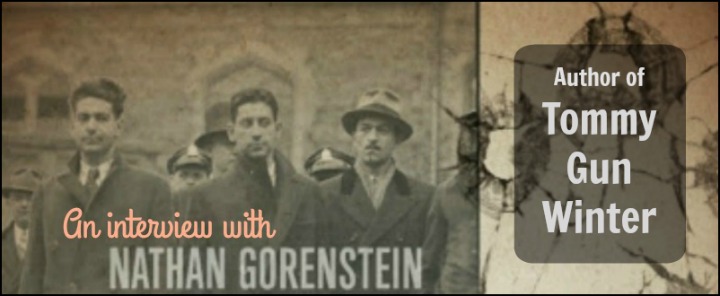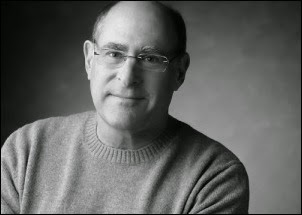One of my most recent true crime reads was “Tommy Gun Winter” by Nathan Gorenstein. Subtitled, “Jewish Gangsters, a Preacher’s Daughter, and the Trial That Shocked 1930s Boston,” this book delivers on all the scandal its tagline promises, and then some.
It’s the story of the lethal but little-known Millen-Faber gang, which terrorized Depression-era Boston with a series of robberies and killings throughout 1933 and 1934. The gang’s crime spree culminated in a February holdup that led to the murder of two police officers in the Boston suburb of Needham. The offenders—brothers Murt and Irv Millen and their cohort Abe Faber—assumed that they were too smart for the cops to catch them. However, a car battery, of all things, set the police on their trail and ultimately led to the gang’s demise. Add to all this the fact that Murt Millen’s wife, Norma, was a minister’s daughter who might have known more about the crimes than she let on, and you’ve got the makings of a story that enthralled Boston residents throughout the dreariest years of the Depression.
“Tommy Gun Winter” is the type of historic true crime book I love: meticulously researched, yet told in an entertaining style that kept me turning the pages. With the amount of devastation the Millens and Faber wrought in such a short period of time, I was surprised that I had never heard of their exploits. However, “Tommy Gun Winter” (so-named after Murt Millen’s weapon of choice) did a great job of transporting me to the streets of 1930s Boston and introducing me to a real-life cast of characters who would almost be sympathetic if their deeds weren’t so vile. In “Tommy Gun Winter,” macho Murt, slow-witted Irv, arrogant Abe, and narcissistic Norma aren’t just one-dimensional villains, but fully fleshed-out human beings who, had the cards been stacked differently, might have led less notorious but more respectable lives.
Gorenstein, who is related to the Millen brothers, answered a few questions about his book exclusively for Historic True Crime. Read on to learn more about Gorenstein’s experience delving into an unsavory chapter of his family history. Also, be sure to check out his website, www.nathangorenstein.com.
Nathan Gorenstein
When did you first learn of the Millen-Faber gang?
I first heard of the “Millen-Faber gang” when I took three months off from work in 1998 to research what I originally thought was a single “bank robber” in the family. It turned out that the “ Millen” of the Millen-Faber gang were two brothers, Murton and Irving Millen, my first cousins twice removed. That makes my great-grandfather the brother of their father. Many of the older relatives I knew growing up were Murt and Irv’s contemporaries. One, in fact, had gone on double dates with Murt and the minister’s daughter who became his wife.
What made you decide to write a book about the Millen brothers, Norma Millen, and Abe Faber?
I began my research after remarks at a family gathering sparked my interest. I quickly realized it was an extraordinary, if tragic, story about sons of a successful Boston contractor from the Jewish neighborhood of Roxbury, and their friend, an MIT graduate with a degree in aeronautical engineering who was also lieutenant in the US Army Reserves. That was Abe Faber. A beautiful 18-year-old minister’s daughter, two Boston newspaper reporters, and two extraordinary state police detectives. Then there was the trial, at the time the longest murder trial in state history, with 17 psychiatrists testifying for the defense or prosecution.
Can you talk a bit about your research process? What sources did you use? Were you able to contact individuals associated with the Millens and/or Faber?
The key resource was the transcript of the murder trial. It is 3,500 pages long. The Massachusetts judicial archive has a copy on microfilm, which I purchased (a paper version). Two other resources deserve equal attention. One is the historic newspaper archive at the Boston Public Library. The library has microfilm copies of just about every Boston newspaper ever published, dating back to the colonial era. In 1934, there were seven competing daily newspapers published in Boston, giving me a wealth of information. Much of it I then used to track down other sources.
Then there were documents I obtained from the archives of the Massachusetts State Police. After a freedom of information request, I ultimately obtained investigative reports and letters written by the detectives who solved the case, the transcript of the only interrogation of the minister’s daughter, and a lengthy memo by one of two newspaper reporters who were credited with helping identify the bank robbers.
I was also able to meet a relative of Norma Brighton, Murt’s wife, and spoke with some Millen relatives.
What were some of the most surprising or noteworthy aspects of the story that you discovered?
The most unusual fact had to do with syphilis. Syphilitic insanity was used as a defense by the MIT grad, and while researching the disease I discovered that a German scientist, Julius Wagner-Jauregg, was awarded the Nobel Prize in 1927 for discovering that syphilis insanity could be treated by infecting the patient with malaria. The resulting high fever killed the syphilis bacteria in the patient’s blood, and the malaria could then be treated with quinine. I kid you not. He [Wagner-Jauregg] later joined the Nazi party.
What is your take on the main players (the Millen brothers, Norma, Abe) and their personalities/motivations?
Murton Millen, the leader of the gang, was a sociopath, a condition partially the result of his genes, partially the result of his upbringing at the hands of a violent father. Irv had below-normal intelligence, and Abe was in love with Murt. He [Abe] began participating in Murt’s hold-ups as a way to stay emotionally close to Murt after his [Murt’s] marriage to the minister’s daughter. It was also then that Murt started killing people. He had been staging robberies for a year prior to the first murder in December 1933.
Norma Brighton Millen was the daughter of divorced parents. Headstrong and 18 years old, she clashed with her father over dating, dancing and boys. Murt, who met her at a beachfront dance hall, offered Norma a way out of the rural town where she lived.
In your opinion, why is the story of the Millen-Faber gang not better known?
Not sure. The Boston papers periodically revisit the crime on major anniversaries. It may be because no federal agency was ever involved, as was the case with [John] Dillinger or Pretty Boy Floyd, and no movie was ever made about the gang itself, as was the case with Bonnie and Clyde. There is a 1939 film with Henry Fonda, “Let Us Live,” that deals with a secondary story in the book.
What impact has the process of researching and writing this book had on you?
I had to learn how to write all over again. After years in journalism I knew how to write a newspaper story, but writing a book was completely different. Structure, detail, tone, authorial voice, etc. It was work, but a great education.
Are additional books in your future?
I’d like to do another book, but for the moment I’m scheduling book readings in Massachusetts and around Philadelphia, where I live nearby.


Leave a Reply